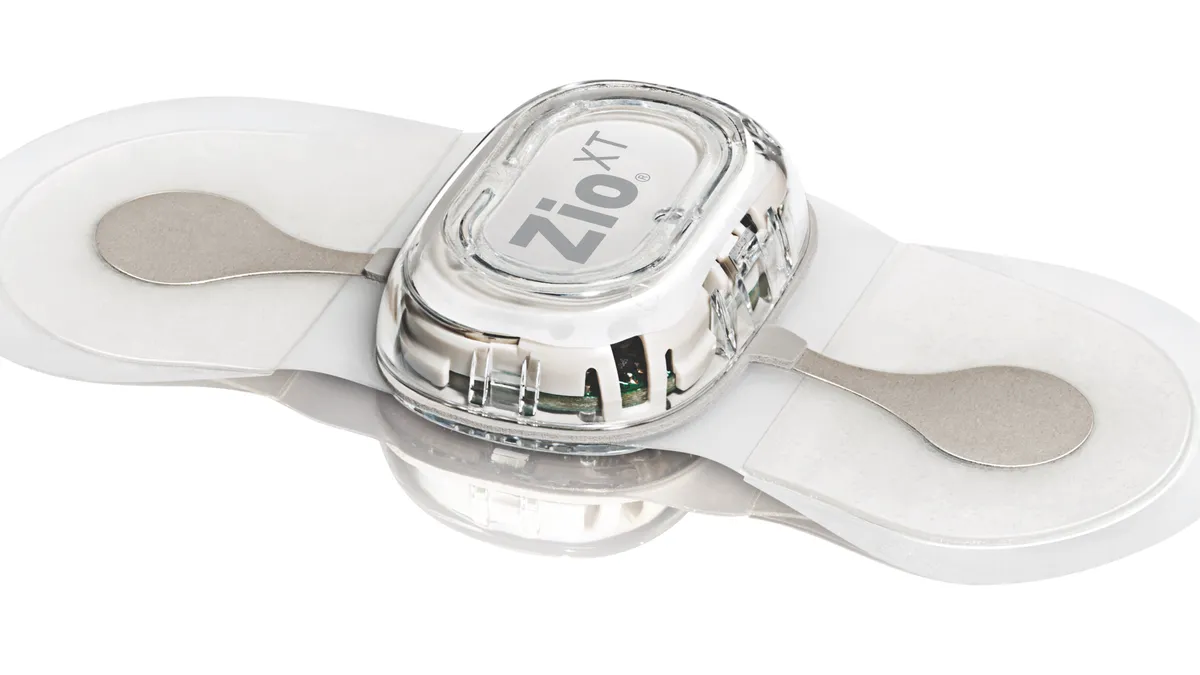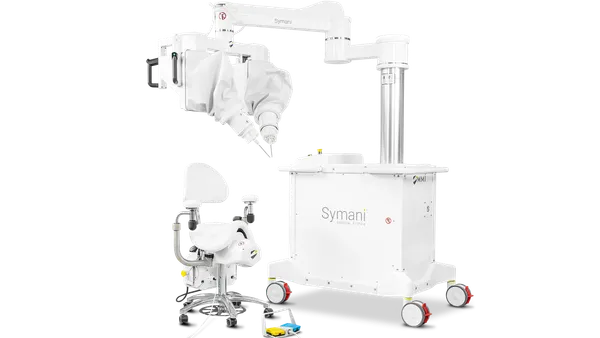Dive Brief:
- iRhythm Technologies has presented new data on its Zio wearable cardiac monitoring device at the American College of Cardiology (ACC) 71st Annual Scientific Session & Expo, building the clinical case for its devices.
- One study used Zio AT for monitoring patients who were taken to hospital after fainting. By using the device to monitor patients after discharge, the physicians reduced hospital stays and potentially improved identification of arrhythmia by extending monitoring beyond typical inpatient assessments.
- The other studies used Zio XT for low-risk patients to screen for atrial fibrillation in patients aged 70 years and older, and Zio AT for high-risk patients to monitor for arrhythmias in patients after transcatheter aortic valve replacement. J.P. Morgan analysts in a Monday note said that "a greater body of evidence supporting the technology will be key as the company pushes to better educate physicians on the value of AT," adding that "when this is coupled with a smaller body of clinical data and a sales rep focus on XT over AT, we believe there is a meaningful opportunity in 2022 and beyond for iRhythm to improve the marketability" of the mobile cardiac telemetry device in a "significantly underpenetrated" market.
Dive Insight:
iRhythm has gradually built the case for Zio in recent years, publishing data on its ability to improve the detection of atrial fibrillation and reduce cardiac events in 2020 and following up with results from another clinical trial last year. Despite the data, iRhythm's share price slumped in 2021 amid pricing pressure, only to recover this year on news of doubling of certain Medicare rates.
With the stock up 35% this year, iRhythm arrived at the ACC conference on a high. The company used the event to present three studies involving its Zio devices, including an assessment of its ability to streamline the management of patients who are taken to hospital after fainting.
Zio AT is a real-time monitor used for higher-risk patients, while Zio XT is for lower-risk patients and is used more longer-term. Zio XT is iRhythm's main product, making up about 90% of revenues last year.
As fainting, known medically as syncope, is associated with atrial fibrillation, physicians keep some patients in the hospital for 24 to 48 hours. The use of Zio AT allowed physicians to monitor patients without keeping them in the hospital. The researchers calculated that Zio AT saved 136 inpatient hospitalization days across the 183-subject study.
The AT device detected arrhythmias that triggered alerts in 8.2% of patients. The average time to notification was 89 hours. Sixty-two percent of notifications happened 24 hours after discharge and 46% happened 48 hours after discharge, suggesting typical inpatient stays fail to detect a significant number of arrhythmias in syncope patients.
Another team presented data from the GUARD-AF study that Bristol Myers Squibb and Pfizer are running to assess the pros and cons of screening for atrial fibrillation in people aged 70 years and older. The primary endpoints are rates of strokes and bleeding leading to hospitalization.
In an update on the trial, researchers revealed that Zio XT detected atrial fibrillation in 4.5% of participants. The rate of 100% atrial fibrillation was 0.5%. In the 225 participants with paroxysmal atrial fibrillation, the median burden was low but more than one-quarter of the individuals had a continuous episode of 4.6 hours or longer. The researchers said the episodes suggest increased stroke risk.
The other Zio study presented at the ACC conference evaluated the Zio AT device in TAVR patients. The device detected atrial fibrillation in around 25% of patients, with the highest percentage seen in the subgroup of people aged under 65 years. The researchers concluded that the results support the need for monitoring "as the use of TAVR expands to lower risk categories."
William Blair analysts in a Monday note said they believe iRhythm's three presentations at the ACC conference can provide "incremental near- and long-term adoption benefits" and "likely meaningful" total addressable market expansion opportunities.
However, the analysts contend that the preliminary results from GUARD-AF were the "most meaningful" update at ACC "reinforcing our long-term conviction in the asymptomatic market that can more than double iRhythm's U.S. treatment opportunity" to include more than 10 million high-risk patients.
"While we need to wait one to two more years for GUARD-AF’s hard endpoints like stroke, we think that iRhythm can leverage its robust screening data from collectively over 7,500 patients (across three key trials including GUARD-AF) to initiate screening pilots in 2022 and ramp up revenue contributions through 2023," the William Blair analysts wrote.












